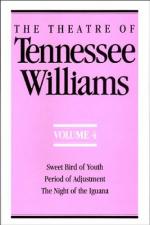|
This section contains 686 words (approx. 2 pages at 400 words per page) |

|
In 1959, the United States was on the verge of major transitions, primarily on the home front, though the ever-escalating Cold War between America and the U.S.S.R. was also a constant threat. The country was expanding. Two new states were admitted in 1959: Alaska and Hawaii. Republican President Dwight D. Eisenhower was near the end of his second term. In 1960, Democrat John F. Kennedy would be elected to the presidency, defeating Eisenhower's vice president, Richard M. Nixon.
Many observers believed that Nixon lost at least partly because of his image and attitudes expressed during televised debates with Kennedy. In the 1950s, politicians were televised for the first time. Senator Joseph McCarthy's anti-Communist hearings were televised. Conventions were aired for the first time in 1952. In 1959, the Federal Communications Commission upheld an equal time rule for political candidates. The power of television was soon realized, then exploited...
|
This section contains 686 words (approx. 2 pages at 400 words per page) |

|




